Cupping
How to submit an article:
- Registered users can submit any published journal article that has a unique DOI (Digital Object Identifier) name or link to Research Hub.
- For example, you can paste the full DOI link:
https://doi.org/10.1109/5.771073or just the DOI name:10.1109/5.771073into the field above and click submit. - The person who is first to submit a valid article to Research Hub will forever be credited for it, and every article submission earns you +6 Research Points.
Published research studies are articles that present the findings of original research that has undergone a peer-review process and has been made publicly available in scholarly journals, books or other media.
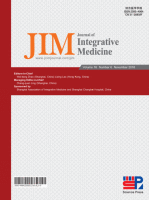
Short-term effects of cupping and scraping therapy for chronic nonspecific low-back pain: A prospective, multicenter randomized trial
2024 Jan Journal of Integrative Medicine He J, Tu X, Yin Z, Mu H, Luo M, Chen X, et al.
The combination of traditional Chinese medicine (TCM) therapy with cupping and scraping using a medicated balm demonstrated superior effectiveness compared to NSAID therapy with topical plasters in reducing pain intensity, improving TCM symptoms, and enhancing quality of life for patients with CNLBP. Additionally, TCM plus physiotherapy exhibited more stable and long-lasting therapeutic effects without adverse reactions.
Randomised Controlled Trial
Evidence-based and adverse-effects analyses of cupping therapy in musculoskeletal and sports rehabilitation: A systematic and evidence-based review
2022 Aug 19 Journal of Back and Musculoskeletal Rehabilitation Mohamed AA, Zhang X, Jan YK
Cupping therapy has low to moderate evidence in musculoskeletal and sports rehabilitation and might be used as a useful intervention because it decreases the pain level and improves blood flow to the affected area with low adverse effects.
Systematic Review Sports Injuries
Effects of Acupuncture, Moxibustion, Cupping, and Massage on Sports Injuries: A Narrative Review
2022 May 27 Evidence-Based Complementary and Alternative Medicine Zhang H, Zhao M, Wu Z, Wang X, Jiang Y, Liang J, et al.
It has been proven that these therapies are convenient and economical medical means to treat sports injuries with a short course and immediate curative effect. Current evidence provides a scientific rationale to include moxibustion, cupping, acupuncture, and massage as nonpharmacological treatment tools as part of a multimodal treatment strategy for sports injuries, which may help reduce the use of medications
Sports Injuries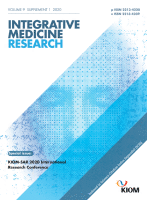
The effectiveness and safety of complementary health approaches to managing postpartum pain: A systematic review and meta-analysis
2022 Mar Integrative Medicine Research Smith CA, Hill E, Denejkina A, Thornton C, Dahlen HG
Systematic Review Meta-Analysis Cupping AcupunctureSome complementary approaches, such as massage and herbal ointments, show promise in reducing postpartum pain.
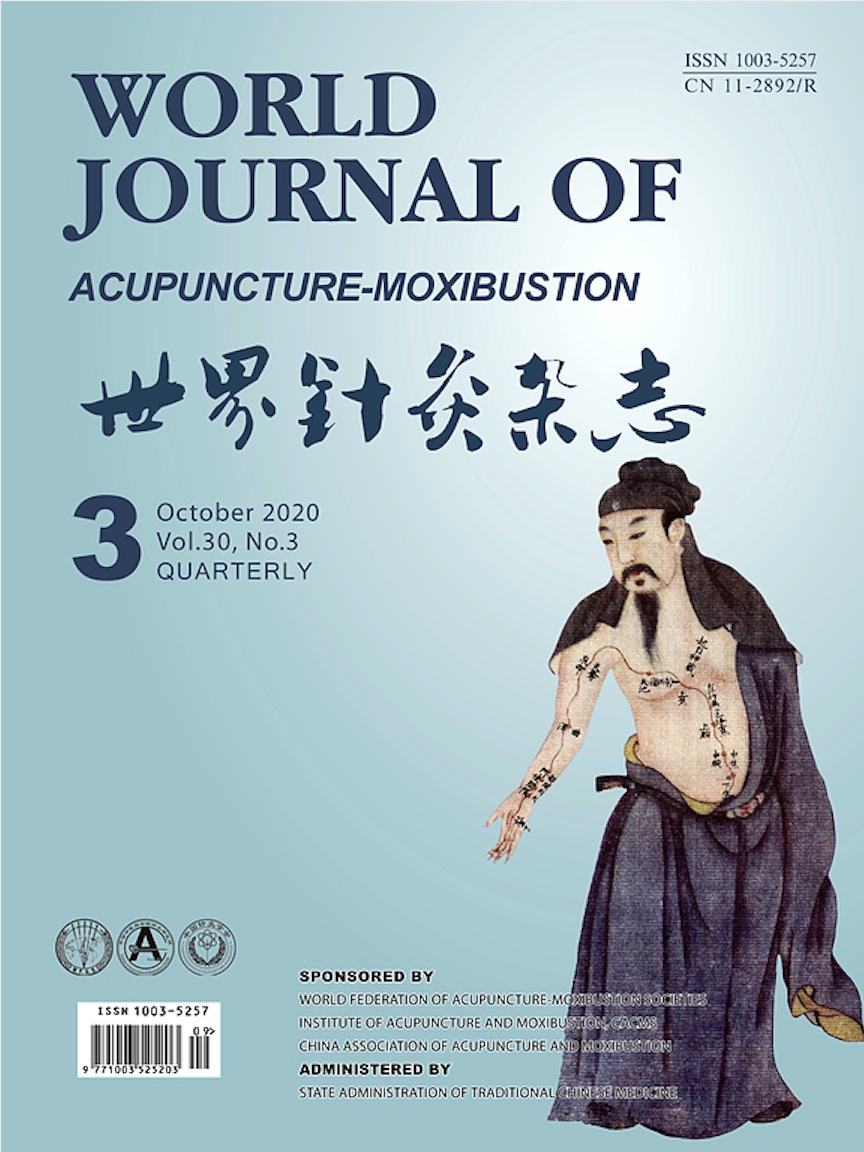
Twenty-eight cases of facial acne treated by quick puncture with collateral-pricking cupping
2021 Oct World Journal of Acupuncture-Moxibustion WANG J, SUN X, ZHANG X, WEI W, JIANG C, QI X, et al.
The effect of pricking acne spot and abdominal region of three toes combined with collateral-pricking cupping on the back is good, being worthy of further clinical discussion to promote its application.
Case Report AcneResearch insights are moderated by the Research Hub team and offer an at-a-glance overview of interesting research findings.

2022 Integrative Medicine Research
Some complementary approaches, such as massage and herbal ointments, show promise in reducing postpartum pain.
Systematic Review Acupuncture
The effectiveness and safety of complementary health approaches to managing postpartum pain: A systematic review and meta-analysis
Smith CA, Hill E, Denejkina A, Thornton C, Dahlen HG

2021 Evidence-Based Complementary and Alternative Medicine
Cupping therapy has beneficial therapeutic effects and could be effective for the treatment of migraine.
Systematic Review
Cupping Therapy for Migraine: A PRISMA-Compliant Systematic Review and Meta-Analysis of Randomized Controlled Trials
Jihye Seo, Hongmin Chu, Cheol-Hyun Kim, Kang-Keyng Sung, Sangkwan Lee

2020 Evidence-Based Complementary and Alternative Medicine
Treatments according to traditional Chinese medicine syndrome differentiation can provide patients with individualized treatments for chronic fatigue syndrome.
Chronic Fatigue Syndrome Syndrome Differentiation
Advances in Clinical Research on Traditional Chinese Medicine Treatment of Chronic Fatigue Syndrome
Zhang X, Wang M, Zhou S

2020 Medicine
Moving cupping therapy, alone or coupled with other treatments, could effectively alleviate symptoms of plaque psoriasis with minimal side effects.
Systematic Review Psoriasis
Moving cupping therapy for plaque psoriasis
Xing M, Ding X, Zhang J, Kuai L, Ru Y, Sun X, et al.

2020 Journal of Integrative Medicine
Cupping therapy, as an adjunct to current treatments, may potentially enhance efficacy when treating patients with chronic urticaria.
Systematic Review Skin Conditions
Cupping therapy for patients with chronic urticaria: A systematic review and meta-analysis
Xiao, X., Zhang, L., Shi, Y., et al.
Review Articles
Review articles summarise and critically evaluate the current state of research on a specific topic or field by synthesising multiple primary research studies.

Evidence-based and adverse-effects analyses of cupping therapy in musculoskeletal and sports rehabilitation: A systematic and evidence-based review
2022 Aug 19 Journal of Back and Musculoskeletal Rehabilitation Mohamed AA, Zhang X, Jan YK
Cupping therapy has low to moderate evidence in musculoskeletal and sports rehabilitation and might be used as a useful intervention because it decreases the pain level and improves blood flow to the affected area with low adverse effects.
Systematic Review Sports Injuries
The effectiveness and safety of complementary health approaches to managing postpartum pain: A systematic review and meta-analysis
2022 Mar Integrative Medicine Research Smith CA, Hill E, Denejkina A, Thornton C, Dahlen HG
Systematic Review Meta-Analysis Cupping AcupunctureSome complementary approaches, such as massage and herbal ointments, show promise in reducing postpartum pain.

Cupping Therapy for Migraine: A PRISMA-Compliant Systematic Review and Meta-Analysis of Randomized Controlled Trials
2021 Mar 25 Evidence-Based Complementary and Alternative Medicine Jihye Seo, Hongmin Chu, Cheol-Hyun Kim, Kang-Keyng Sung, Sangkwan Lee
Systematic Review Meta-AnalysisCupping therapy has beneficial therapeutic effects and could be effective for the treatment of migraine.

Moving cupping therapy for plaque psoriasis
2020 Oct 09 Medicine Xing M, Ding X, Zhang J, Kuai L, Ru Y, Sun X, et al.
Systematic Review Meta-Analysis Cupping PsoriasisMoving cupping therapy, alone or coupled with other treatments, could effectively alleviate symptoms of plaque psoriasis with minimal side effects.

Cupping therapy for patients with chronic urticaria: A systematic review and meta-analysis
2020 Jul Journal of Integrative Medicine Xiao, X., Zhang, L., Shi, Y., et al.
Systematic Review Meta-Analysis Skin ConditionsCupping therapy, as an adjunct to current treatments, may potentially enhance efficacy when treating patients with chronic urticaria.
Clinical Trials
Clinical trials are research studies that involve people and are conducted to evaluate the safety and efficacy of new treatments or interventions, such as drugs, medical devices, or behavioural therapies.

Short-term effects of cupping and scraping therapy for chronic nonspecific low-back pain: A prospective, multicenter randomized trial
2024 Jan Journal of Integrative Medicine He J, Tu X, Yin Z, Mu H, Luo M, Chen X, et al.
The combination of traditional Chinese medicine (TCM) therapy with cupping and scraping using a medicated balm demonstrated superior effectiveness compared to NSAID therapy with topical plasters in reducing pain intensity, improving TCM symptoms, and enhancing quality of life for patients with CNLBP. Additionally, TCM plus physiotherapy exhibited more stable and long-lasting therapeutic effects without adverse reactions.
Randomised Controlled Trial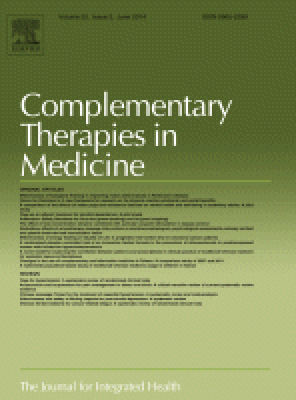
Partially randomized patient preference trial: Comparative evaluation of fibromyalgia between acupuncture and cupping therapy (PRPP-FACT)
2020 Nov Complementary Therapies in Medicine Cao HJ, Zhang YJ, Zhou L, Xie ZG, Zheng RW, Hu H, et al.
The PRPP model, which combines both random assignment and patients' preferences, is suitable for the clinical evaluation of non-pharmaceutical therapies such as acupuncture and cupping for fibromyalgia, with no significant differences observed in drop-out rates, patient expectation, and satisfaction between the two treatment modalities.The PRPP model, which combines both random assignment and patients' preferences, is suitable for the clinical evaluation of non-pharmaceutical therapies such as acupuncture and cupping for fibromyalgia, with no significant differences observed in drop-out rates, patient expectation, and satisfaction between the two treatment modalities.
Randomised Controlled Trial
Efficacy of Hijamat (wet cupping therapy) in Iranian patients with nonalcoholic fatty liver disease: a controlled clinical trial
2020 Apr 9 Turkish Journal of Medical Sciences Bashiri H, Bozorgomid A, Shojaeimotlagh V.
Randomised Controlled Trial
The comparison of fennel infusion plus dry cupping versus metformin in management of oligomenorrhoea in patients with polycystic ovary syndrome: a randomised clinical trial
2019 Mar 11 Journal of Obstetrics and Gynaecology Mokaberinejad R, Rampisheh Z, Aliasl J, Akhtari E.
The present study concludes that fennel seed infusion plus a dry cupping therapy is effective and safe in reducing the days between two menstrual periods and manages oligomenorrhoea.
Randomised Controlled TrialStudy Protocols
Published study protocols are detailed plans that outline the objectives, methodology, statistical analyses, and organisation of a research study that have been made publicly available for others to review and use as a reference.
Presentation Slides

Systematic Review
Some complementary approaches, such as massage and herbal ointments, show promise in reducing postpartum pain.
Smith CA, Hill E, Denejkina A, Thornton C, Dahlen HG

Systematic Review
Cupping therapy has beneficial therapeutic effects and could be effective for the treatment of migraine.
Jihye Seo, Hongmin Chu, Cheol-Hyun Kim, Kang-Keyng Sung, Sangkwan Lee

Treatments according to traditional Chinese medicine syndrome differentiation can provide patients with individualized treatments for chronic fatigue syndrome.
Zhang X, Wang M, Zhou S

Systematic Review
Moving cupping therapy, alone or coupled with other treatments, could effectively alleviate symptoms of plaque psoriasis with minimal side effects.
Xing M, Ding X, Zhang J, Kuai L, Ru Y, Sun X, Ma T, Miao X, Liu L, Wang Y, Li B, Li X

Systematic Review
Cupping therapy, as an adjunct to current treatments, may potentially enhance efficacy when treating patients with chronic urticaria.
Xiao, X., Zhang, L., Shi, Y., Yao, J., Cao, W., Liu, Y., Zou, Z., Zhou, S., Chen, M., Li, C., Zheng, Q., & Li, Y.
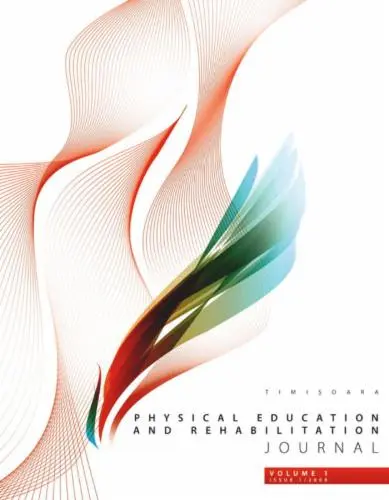
Systematic Review
The results of manual, traditional and non-invasive therapies are similar to those of surgical treatments, and even better in a very large number of cases.
Glazer C, Pantea C

Systematic Review
Cupping therapy has demonstrated notable effects in reducing chronic back pain in adults.
Moura, C. C., Chaves, É., Cardoso, A., Nogueira, D. A., Corrêa, H. P., & Chianca, T.
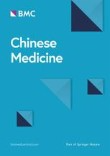
Systematic Review
Cupping therapy and acupuncture are potentially safe, and they have similar effectiveness in relieving pain.
Zhang, YJ., Cao, HJ., Li, XL. et al.
Executive Summary
Write an executive summary in the form of a blog article on the topic of "Research into Chinese medicine treatment for Cupping" summarising the research below and using language that can be easily understood by patients and avoiding medical jargon using a professional and caring tone of voice.
Write an executive summary in the form of a blog article on the topic of "Researched Chinese medicine treatments for Cupping" summarising the research below in an objective and easy to understand way, and using language that can be easily understood by patients. Group the article into Chinese medicine treatments first, followed by nutrition and other treatments. Avoid using medical jargon and use a professional and caring tone of voice.
Write me a concise but easy to understand executive summary on the topic of "Chinese medicine treatments for Cupping" based on the following research that I will give you. Your summary should be 2 paragraphs long in Australian English spelling and include references to the studies.
A Systematic Review published in 2022 in the journal Integrative Medicine Research found that Some complementary approaches, such as massage and herbal ointments, show promise in reducing postpartum pain. This passage discusses a systematic review aimed at examining the effectiveness and safety of non-pharmacological methods for managing postpartum pain in women. The review included 30 trials involving both first-time and experienced mothers who experienced pain in the two weeks following childbirth. The primary focus was on pain reduction. The review found that massage showed a reduction in pain for women who had undergone caesarean births within the first 24 hours postpartum and at seven days postpartum. Additionally, herbal ointments were found to reduce perineal pain for women who had received an episiotomy within the first 24 hours and at 14 days postpartum. However, the number of trials reporting on safety was limited, and the overall quality of evidence was deemed very low. The conclusion emphasizes the need for further high-quality trials to assess the safety and effectiveness of herbal ointment and massage during the early postpartum period.
A Systematic Review published in 2021 in the journal Evidence-Based Complementary and Alternative Medicine found that Cupping therapy has beneficial therapeutic effects and could be effective for the treatment of migraine. We analyzed 6 RCTs with 510 migraine participants in this review and the results show that wet cupping and dry cupping could improve the migraine symptoms. No significant adverse events were identified in the studies included in this review. This review is the first comprehensive systematic review and meta-analysis about cupping therapy for migraine. In addition, the levels of evidence were presented through assessment of the quality of the evidence. The quality of the level of evidence was low in the wet cupping versus drugs group and dry cupping plus acupuncture versus acupuncture group. Regardless of the potential bias and limitations, all the included studies concluded that cupping therapy had beneficial therapeutic effects in treating migraine. Cupping therapy has potential therapeutic effects on treating migraine. Further larger and rigorously designed RCTs are needed to confirm the cupping therapy’s therapeutic effect. Additional economic studies might be considered for future studies to compare the cost-effectiveness of cupping therapy plus acupuncture or cupping therapy plus drugs.
A published in 2020 in the journal Evidence-Based Complementary and Alternative Medicine found that Treatments according to traditional Chinese medicine syndrome differentiation can provide patients with individualized treatments for chronic fatigue syndrome. Currently, there are many methods for treating CFS with TCM, showing its advantages. On one hand, treatments according to syndrome differentiation are diverse and involve herbal decoctions and proprietary Chinese medicines. External treatments include moxibustion, acupuncture, tuina, cupping, and other treatments. Combination therapies include two or more external treatments combined and internal and external treatments combined, which are often better than monotherapies and can remedy deficiencies. However, the clinical manifestations of CFS are different. Although fatigue is the main manifestation, there are individual differences in the appearance of insomnia or muscle pain in some patients. Treatments according to syndrome differentiation can provide patients with individualized treatments. On the other hand, TCM often has the advantages of simplicity, effectiveness, convenience, and a lower cost.
A Systematic Review published in 2020 in the journal Medicine found that Moving cupping therapy, alone or coupled with other treatments, could effectively alleviate symptoms of plaque psoriasis with minimal side effects. The researchers conducted an exhaustive review of various databases up until March 2020, including PubMed, Embase, and others. The review focused on randomized controlled trials concerning the treatment of plaque psoriasis using moving cupping therapy, either alone or combined with Chinese herbs or conventional Western medicine. The effects obtained from these trials were contrasted with outcomes from placebo-controlled, pharmaceutical medication-based or Chinese herb-based treatments. They also compared the frequency of the moving cupping treatment. After a meticulous selection process, sixteen trials involving 1164 participants met the entry criteria. The meta-analysis demonstrated that those who underwent moving cupping therapy exhibited significant symptom improvement compared to those who did not. Additionally, the combination of moving cupping and pharmaceutical medications proved to be more effective than pharmaceutical treatments alone. The recurring rate of psoriasis also substantially dropped due to cupping therapy. While moving cupping reduced some blood markers more effectively than conventional medicine did, it didn't show distinct advantages in the visual analogue score. Few transient side effects like redness, itching, and local skin burning were reported associated with moving cupping therapy.
A Systematic Review published in 2020 in the journal Journal of Integrative Medicine found that Cupping therapy, as an adjunct to current treatments, may potentially enhance efficacy when treating patients with chronic urticaria. The research adopted a systematic review of randomized controlled trials, with the focus on efficacy and safety of cupping therapy for chronic urticaria. The researchers employed a search strategy aimed at identifying related keywords like "chronic urticaria" and "cupping therapy" in the title and abstracts, sourced from nine major electronic databases up till May 2019. Only trials that included patients with chronic urticaria who received dry or wet cupping were considered. The quality of the methodological design and potential bias of the studies were evaluated. The findings suggest the efficacy of cupping therapy when used, not as a standalone treatment, but as an adjunct to other treatments, particularly to antihistamines and acupuncture. In a sample of trials, there were no significant differences between using wet cupping and conventional medications in terms of their total effective rate. However, cupping therapy combined with antihistamines or acupuncture was found to be more effective than when these treatments were used separately. No serious adverse events were reported as part of these findings.
A Systematic Review published in 2019 in the journal Timisoara Physical Education and Rehabilitation Journal found that The results of manual, traditional and non-invasive therapies are similar to those of surgical treatments, and even better in a very large number of cases. In the current context of medicine and therapy, statistics indicate a tendency to approach the carpal tunnel syndrome by surgical treatment, to the detriment of approaching the pathology through a non-invasive technique. The relevant specialized articles selected for this study, and published in the past 10 years, prove that alternative medicine, physical therapy, electrotherapy, and the natural evolution of untreated patients or of patients exposed to the placebo effect, may significantly improve the symptoms of the carpal tunnel syndrome.
A Systematic Review published in 2018 in the journal Revista Latino-Americana de Enfermagem found that Cupping therapy has demonstrated notable effects in reducing chronic back pain in adults. The systematic review and meta-analysis involved two independent researchers who examined national and international databases. They also explored the reference lists of additional systematic reviews. The quality of the studies was evaluated using the Jadad scale, a globally recognized tool assessing the methodological quality of clinical trials. Extracting 16 studies for qualitative review and 10 for quantitative analysis, the research found positive impacts of cupping therapy on chronic back pain in adults. It was noted that there isn't a standardized protocol for treatment with this therapy. The study mainly evaluated outcomes based on factors such as pain intensity, physical incapacity, the quality of life, and the nociceptive threshold before the application of mechanical stimulus. A noteworthy reduction in pain intensity was seen through the use of cupping therapy.
A Systematic Review published in 2017 in the journal Chinese Medicine found that Cupping therapy and acupuncture are potentially safe, and they have similar effectiveness in relieving pain. Regardless the potential bias and limitations of this review, all of the included studies showed that cupping therapy had similar therapeutic effects with acupuncture in treating pain-related conditions (such as cervical pain, back pain, osteoarthritis, and acute soft tissue injury). For pain-related conditions, cupping therapy and acupuncture have different choice of acupoints. Based on our review, acupuncture often use two basic acupoints which are tenderness point (Ashi) and the meridians passing through the pain area; while for cupping therapy, wet cupping uses special acupoints (such as Haoyi for cervical spondylopathy) for local pain, and flash cupping combined with moving cupping often use the meridians passing through the pain area for widespread pain. Considering the similar therapeutic effects of these two therapies, clinical practitioners may consider to choose any of them, based on their own clinical experience and the preference of patients.
Moderation Tools
Topic
Sign In
Users not signed in are limited to viewing the 5 most recent items of content.
Studies have shown a strong relationship between the level of ferritin and the severity of NAFLD. —Jinnan C 3 Oct 2021